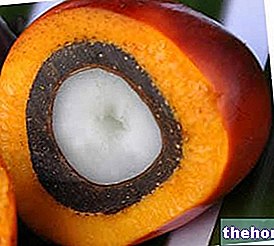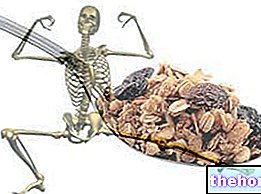Calcium in the Human Body
In the human body there is a total of about 1000 g of calcium, distributed:
- in bone tissue with a structural function (99%);
- in muscle tissue (0.3%);
- in plasma, extracellular fluid and other cells (0.7%).
The calcium present in the plasma is represented, for 50%, by free calcium ions, for 40%, it is bound to proteins and, for 10%, is complexed with anions. Among these three, the most important fraction is represented by ionized calcium (50%), as it is physiologically active, therefore strictly controlled.
Calcemia is defined as the concentration of calcium ions in the blood. Under normal conditions this parameter is kept within a narrow range of values, which goes from 9 to 10 mg per deciliter of blood. Both its lowering (hypocalcemia) and its excessive rise (hypercalcemia) cause serious functional alterations to the striated and smooth muscles.
In fact, extraosseous calcium performs numerous functions:
- it is necessary for the transmission of the nerve signal;
- is involved in the molecular mechanism of muscle contraction;
- it works as an intracellular signal for some hormones, such as insulin;
- it is necessary for the functioning of various enzymes thanks to which it intervenes, for example, in the coagulation cascade;
- it is part of the intercellular cement that holds cells together at the level of tight junctions;
Effects of hypocalcemia: tetany, cardiac hyperexcitability, bronchial, bladder, intestinal and vascular spasms.
Effects of hypercalcemia: reduction of muscular and nervous excitability.
To avoid the onset of these conditions, calcium is continuously kept under control thanks to the combined action of various hormones, such as calcitonin and parathyroid hormone.
Bones: what they are made of and how they are renewed
Bone is a highly specialized connective tissue and, as such, composed of cells, fibers and amorphous fundamental substance. The latter, together with the fibers, constitutes the so-called extracellular matrix, formed in turn by a mineral component and a fraction organic.

The organic component of the extracellular matrix, also called osteoid, is made up of collagen fibers (95%) and amorphous fundamental substance (5%), in turn composed of proteoglycans.
The bone is a dynamic structure, subjected to a remodeling process that continues throughout life. The extent of this process is considerable (about 1/5 of the skeleton is remodeled every 12 months) and, as such, requires a good supply of energy. Furthermore, to support bone remodeling, it is essential to associate the caloric intake with a good availability of minerals, especially calcium.
Responsible for bone renewal are two types of cells, respectively called osteoclasts and osteoblasts. The former, polynuclear and rich in microvilli, secrete proteolytic acids and enzymes which, by destroying the bone matrix, release the minerals it contains. Thanks to this process, about 500 mg of calcium are removed daily from the bone (0.05% of total calcium). As a result of this process of bone erosion, the osteoblasts, cells with diametrically opposite functions compared to the previous ones, intervene. in fact, they guarantee the formation and deposition of the organic matrix in the cavities generated by the catabolic action of the osteoclasts. As soon as this matrix reaches a sufficient thickness, it is readily mineralized, thanks to the interposition of calcium. This mineralization process goes on for months, during which the density of the new bone progressively increases.
Most of the bone mass is accumulated by the age of 18-20; after this period the mineralization continues to increase, albeit slowly, until it reaches its peak around the age of thirty. For this reason it is very important to promote regular physical activity and adequate nutrition at a young age.
After the age of 40, bone mass undergoes a physiological reduction in the organic and mineral components. This absolutely physiological and therefore inevitable process is called senile osteoatrophy. On the contrary, if the loss of bone mass is such as to compromise the performance of normal bone functions, it is called osteoporosis. The difference between osteoatrophy and osteoporosis, therefore, is only quantitative. The two conditions are the same from a qualitative point of view. , because they share a reduction in bone mass due to the organic and mineral components.
Risk factors for osteoporosis
Many risk factors predispose to osteoporosis. Some of these are congenital and, as such, cannot be changed (female sex, white population, long-limbed build, familiarity, age and menopause). For environmental or behavioral factors, however, it can be done very:
- forced immobility (cast of a limb, astronauts, etc.) there are specific therapies to accelerate bone remineralization);
- Diet low in calcium, Vitamin C (intervenes in the maturation process of collagen) and D (increases intestinal absorption of the mineral).
- Sedentary lifestyle (movement facilitates the deposition of calcium in the bones);
- Excess of physical exercise (especially if not accompanied by an adequate intake of macro and micronutrients, can accelerate bone decalcification);
- High-protein diet (too many proteins promote hypecalciuria, ie an excessive elimination of calcium in the urine); however, it should be noted that in several studies, high-protein diets have been shown to increase intestinal absorption of calcium, compensating for the increased urinary losses of the mineral; moreover, a diet very rich in proteins seems to favor the synthesis of hormones with an anabolic effect on the bone ( such as IGF-1), reducing the synthesis of parathyroid hormone; at present, therefore, high-protein diets are NOT considered harmful to bone health; even a low-protein diet, on the other hand, could represent a risk factor for osteoporosis.
- Abuse of alcohol and coffee
- Smoke
- Prolonged use of certain medications (such as cortisones)
The cessation of estrogen production increases the risk of osteoporosis in postmenopausal women, since the stimulatory effect of these hormones on osteoblastic proliferation is lost. Bone loss is particularly high in the first five years after the climacteric. delicate period of life physical exercise has been shown to be particularly effective in attenuating bone loss.
pregnancy and breastfeeding
Calcium and Vitamin D
The presence of vitamin D is essential for intestinal absorption of dietary calcium. This substance can be taken with some foods (liver, fish and fish oils, eggs, butter, milk and a few other foods) or be synthesized in the skin.
Starting from cholesterol, 7-dehydrocholesterol is formed which, due to the action of UV rays on the skin, gives rise to vitamin D3. In turn, this vitamin must be activated, first passing into the liver, where it is hydroxylated, and, finally, to the kidney, where it is completely activated. A vitamin D deficiency can therefore depend on insufficient food intake and / or insufficient exposure. In addition, this deficit may be linked to the presence of serious liver and / or kidney diseases, which inhibit the activation of the vitamin.
Being fat-soluble, vitamin D is stored in the adipose tissue. This substance promotes the intestinal absorption of calcium by the same mechanism as steroid hormones. As such, it enters the nucleus of enterocytes and induces the coding for the synthesis of a protein, called calcium binding protein (CaBP). This protein is capable of carry calcium ions inside enterocytes.
In essence, therefore, vitamin D is essential to increase the intestinal absorption of calcium taken with food. The amount of calcium ions that is absorbed, however, also depends on other constituents of the diet. The bioavailability of calcium is in fact limited by the presence of intestinal level of oxalates (contained in cocoa and green leafy vegetables such as spinach and chard), phytates (bran, legumes, wholemeal bread) and the presence of too many lipids.
Given the importance of vitamin D for the intestinal absorption of calcium, its deficiency has repercussions in an inadequate mineralization of the newly formed bone matrix. When this condition becomes chronic, it causes rickets in children and osteomalacia in adults.




























